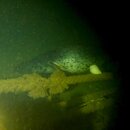That is nearly what is done today, and it is controversial for the same reason. In a CESA, the student should begin the ascent neutrally buoyant, as would happen on a real dive. During the ascent, the BCD will expand, and the student is taught to dump air a little at a time as that happens so that the ascent remains under control.In CMAS training we used to train students performing a CONTROLLED buoyant ascent, not swimming at all, but playing with the BCD for ascending at a reasonable speed. They even had to stop at 3m, where the deco bar was hanging from the boat, and additional tanks were waiting. The exercise was planned to be conducted from 15 meters depth, at the end of an instructional dive, and followed by a 5-minutes safety stop at the deco bar.
After a few years this exercise was removed from the syllabus, as it was considered dangerous. For the instructor, not for the student, as the instructor had to ascend together with the student and had to repeat this ascent with each student on the group (usually 4), causing a significant risk due to the repetitive up-down profile.
The issue of multiple ascents for the instructor is very much still in play. Years ago PADI identified a specific dive on which the CESAs were to be done, but PADI now allows the instructor to spread them over the entire set of dives to limit the number of ascents on one dive.
When people talk about this, they often talk about that as if the CESA were the only ascent going on. There are other ascents, though, and in instructor will be yoyoing quite a bit during the OW class even with the CESAs spread out. Let's say, for example, that the instructor has a class of 8 students, and he decides to do 2 CESA's on dive #2. The instructor also has to ascend 4 times (once each for each buddy team) doing an OOA. Then the instructor has to ascend with the class at the end of the dive. That's a total of 7 ascents on that dive.





